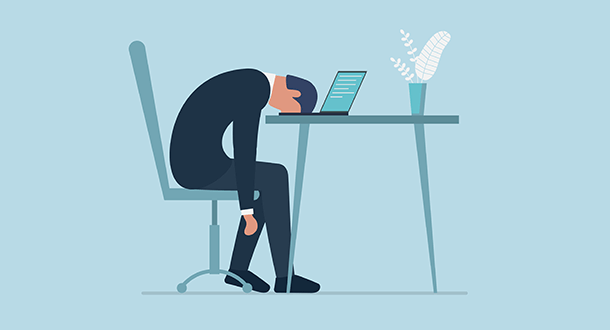June 7, 2021
The Ill Effects of Prolonged Sitting

By Ram Rao, Ph.D., Principal Research Scientist for Apollo Health
Since the pandemic hit us, and working from home became the new norm, a majority of people are spending countless hours sitting in front of the computer. Research studies show that in general, people spend a majority of the time sitting and engaging in sedentary activities that include the time spent sitting in an automobile on a long commute, sitting at a desk at work, sitting on the couch after work, watching television, phone texting, or surfing the internet.
Scientific studies have shown that prolonged sitting increases the risk of heart disease, diabetes, and metabolic syndrome. Prolonged sitting delays fat digestion and metabolism, reduces bone mineral density, and raises the risk of fractures. Those who spend a lot of time sitting have an almost eight-fold increased risk of dying prematurely compared to those who are more mobile. And now, researchers also point out that prolonged sitting and sedentary behavior trigger thinning of the medial temporal lobe (MTL), a brain region that is critical to memory formation. MTL thinning can be a precursor to cognitive decline and dementia in middle-aged and older adults.
Simply put, the human body is not built to sit for long periods. Our ancestors — the cavemen — naturally spent many hours outdoors, walking, hunting, and foraging for food. Physical exercise to them was not considered “working out,” but instead was just a part of daily living. Compare this to our modern world, where physical activity is considered an intervention by the health coach or physician to overcome the negative impacts from prolonged sitting.
Do you reap the same benefits if you exercise daily before or after a long day at your sedentary job? Scientists warn that continuous sitting for eight hours or longer offset any benefits that come from a daily exercise, suggesting that even if you fulfill the recommended guidelines for daily exercise, you are still at a higher risk for disease and declining health if you engage in prolonged sitting. Is the solution then to spend more time standing? Since too much standing can affect the legs, knees, and lower back, most experts recommend a fifty-fifty sit-stand balance for optimal health. So, what could this look like in the real world? Because I spend many hours sitting at a desk, I like to interrupt my sitting time as often as possible. I try to do this by moving or stretching for at least ten minutes for every 60 minutes that I sit at the desk.
Since prolonged sitting impacts public health and the health span of the individual, it is never too late to make simple changes and maintain a reasonable amount of physical activity, particularly across the middle and later years, to avoid memory loss and other serious chronic illnesses.
Members of the ReCODE and PreCODE programs can read more about the benefits of physical exercise here.




